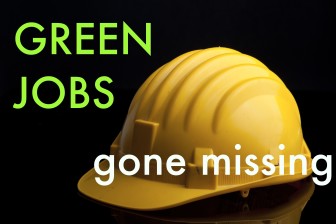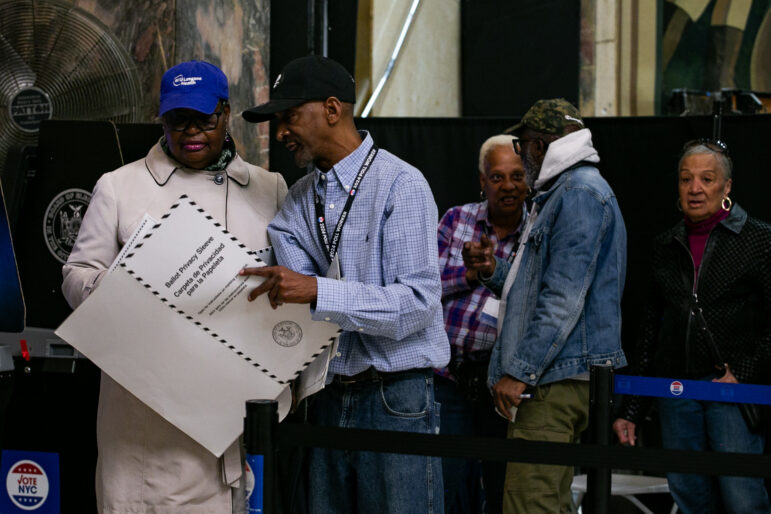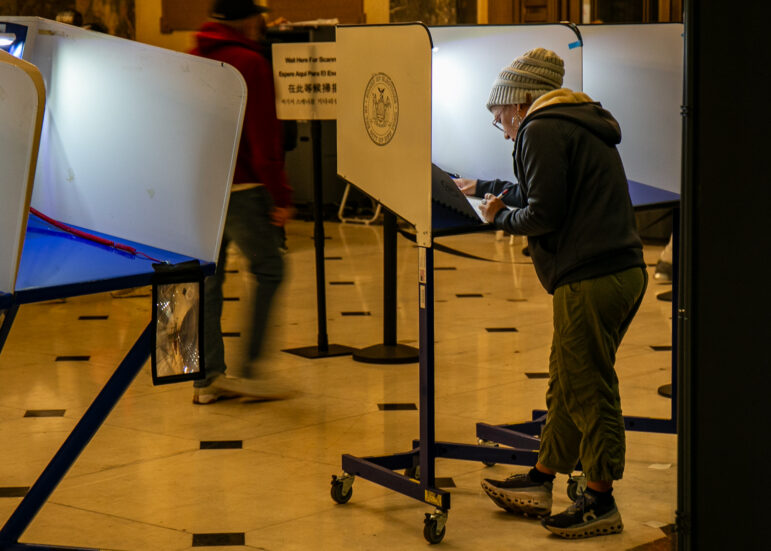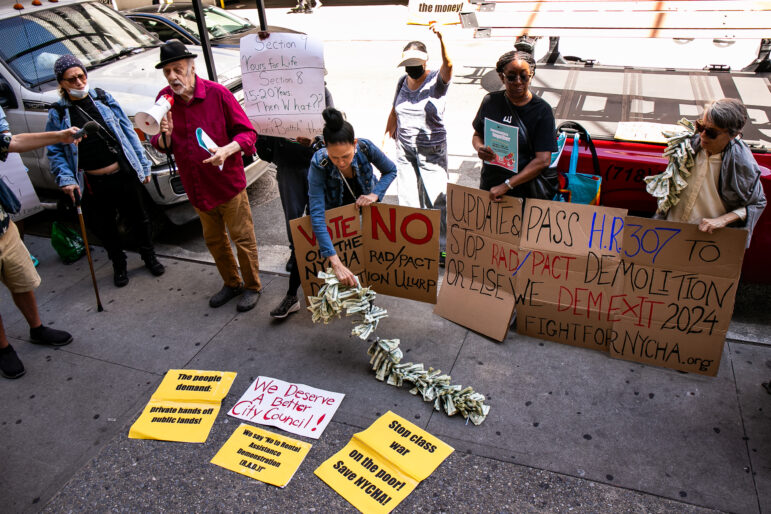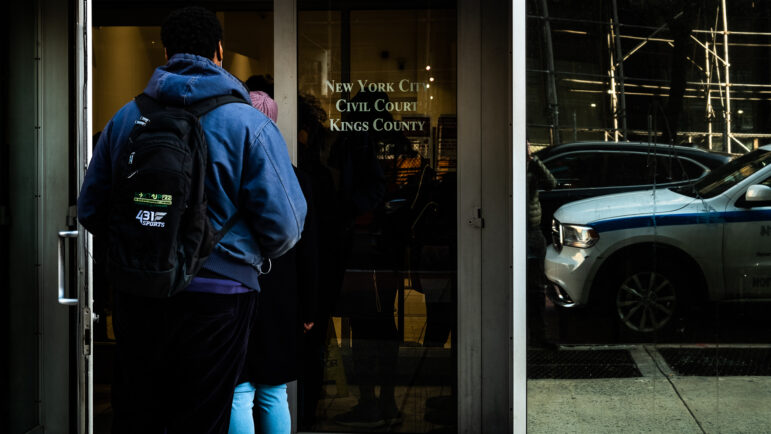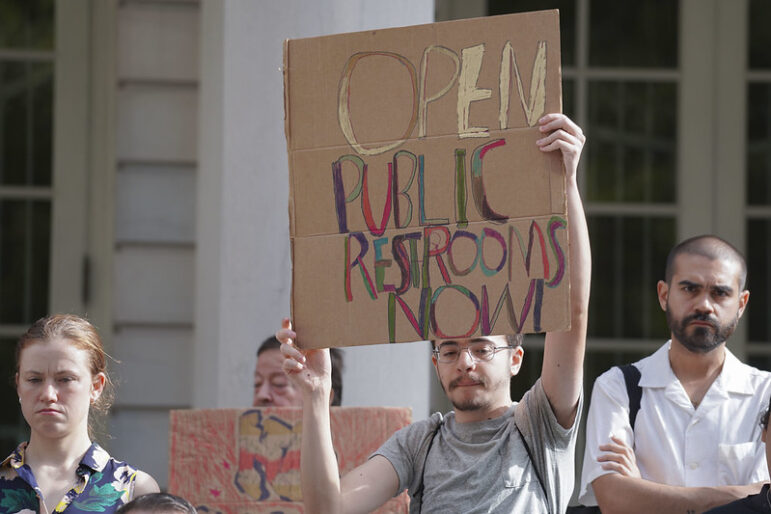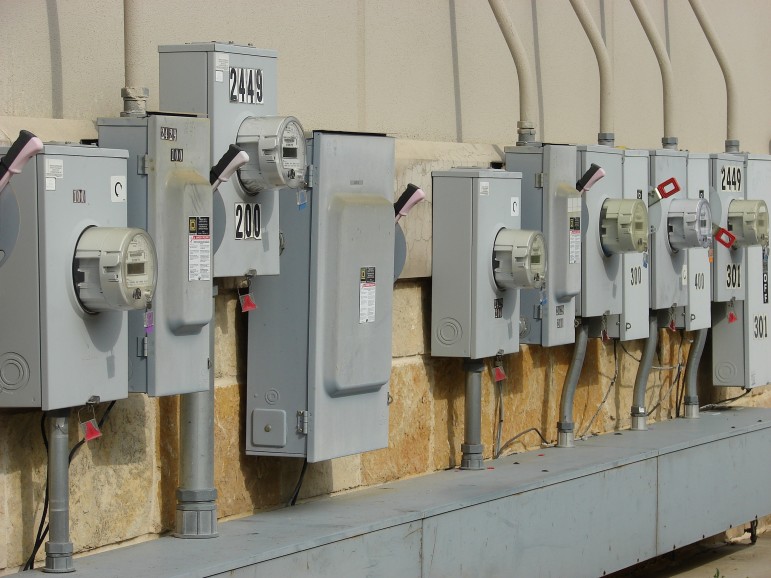
Loadmaster
The GJGNY initiative aimed to help private homes, multifamily units and small commercial spaces pay for retrofits to increase energy efficiency.
Jose Segura, a self-employed insurance agent based in Albany, had fallen on hard times two years ago when he began his application for a loan to retrofit his house under the state’s Green Jobs/Green New York energy efficiency program. He had been out of work for some time and his home was in dire need of an upgrade. The heating system on the second floor of his two-story home was 25 years old and only working at about 30 percent efficiency. Segura did not want his family and his single tenant to freeze in the wintertime.
So he mailed in his application to the New York State Energy Research and Development Authority, the agency overseeing GJGNY in the summer of 2014. Almost immediately, Segura’s application was denied. His debt-to-income ratio was too high.
Segura turned to Kathleen Langton for help. Langton is the energy program manager at AHP Homeownership Center, one of 12 constituency-based organizations (CBOs) recruited by NYSERDA to help individuals and business owners interested in energy efficiency improvements. With Langton’s help, Segura submitted the required documents—1099s, credit reports, electric bills, tax returns, and even his tenant’s tax returns. To improve his chances at getting approval this time, Segura paid down the majority of his credit-card balances. He thought this would improve his debt-to-income ratio and he would be approved the second time around. Despite Segura’s best efforts, he was once again denied.
“They don’t look between the lines. They just see black and white,” says Segura. “For somebody in my situation who is self-employed, it’s difficult.”
When Green Jobs/Green New York (GJGNY) launched in 2009, NYSERDA hoped to help New Yorkers lower their carbon footprint and reduce their energy bills through energy efficiency improvements. The years-long statewide initiative was composed of a few different programs to achieve this mission, one of which provided financing to private homes, multifamily units and small commercial spaces to pay for retrofits.
NYSERDA anticipated they would retrofit one million homes when GJGNY launched, but the actual results failed to meet the agency’s expectation. Instead, only 22,707 GJGNY loans were submitted since November 2010.
A City Limits investigation found that a litany of problems prevented GJGNY from reaching as many customers as it hoped—and, in particular, to include low- and moderate-income households in the benefits of energy-efficiency-retrofits. From the design of the financing mechanisms, to the criteria for loans, to the way applications were processed, GJGNY sapped the very consumer demand it was trying to spur.
Now that New York State is embarking on a new effort to reshape the energy market, some wonder if state policymakers have heeded the lessons learned from its earlier attempt.
Two paths to a greener home
Under Green Jobs-Green New York Act of 2009 and the Power NY Act of 2011, homeowners could apply for two types of reduced-interest financing to retrofit their homes: a traditional Smart Energy loan repaid in installments to NYSERDA’s loan servicer, and the flexible On-Bill Recovery Financing Program meant for low- to moderate-income borrowers.
Homeowners applying for either loan would first have their property assessed by a NYSERDA-approved contractor, who would determine the specific energy improvements needed and their associated costs. The eligible homeowner would then apply for financing, with approval allegedly taking as little as seven days from application submission, and repay the loan once the project, which can take three to four months, is complete.
The number of residential applications received has steadily increased between 2012 and 2015. During this period, the cumulative rate of denial for both loan types had steadily decreased from 31.4 percent three years ago to 22.9 percent in 2015’s second quarter. But the program is still a far cry from the transformative initiative it was supposed to be.
And while the loan program as a whole failed to live up to the hype, On-Bill Recovery was the greater disappointment.
According to NYSERDA’s monthly report, Smart Energy loans accounted for close to two thirds of the nearly 24,000 loan applications received and over half of the 9,364 loans closed as of June 2015. Smart Energy loans also make up the lion’s share of loan value for closed loans —nearly $64 million of over $101 million.
On-Bill Recovery loans pale in comparison. On-Bill Recovery accounted for a little over 3,000 loans closed, with a total loan value of $37.8 million. It also had a higher application denial rate: 20.67 percent compared to Smart Energy’s 17.66 percent.
Problems with process
Many of the constituency-based organizations tasked with recruiting loan borrowers say that, despite its good intentions, NYSERDA’s utility-based On-Bill Recovery, financed through a revolving loan fund, is a long and difficult process that excludes the very people it hoped to attract.
“There are a lot of different steps. There’s a lot of disconnect,” says Langton from the Affordable Housing Partnership’s Homeownership Center in Albany. “The poor people themselves are confused. I’m confused.”
By NYSERDA’s numbers, the Affordable Housing Partnership, which covers the Capital region, was one of the more successful CBOs in generating GJGNY loans over the last five years. Of the 1,591 applications processed in that area between November 2010 and June 2015, only 20.7 percent were denied — the third-lowest denial rate among the nine regions in the state.
But the final loan data don’t reflect interest in the program, which, Langton says, is higher than the application numbers indicate. The NYSERDA report excludes pending and withdrawn applications — and often, low-income homeowners have withdrawn applications even if approved because they’re frustrated with the system, she says.
“I can’t get people through the system,” says Langton. “That’s my problem. If I could get someone closed in 6 months, I would do handstands and flips because that would be great.”
Indeed, getting a loan approved was only half the battle. Of the nearly 10,000 On-Bill Recovery loan applications received over the last five years, nearly three quarters of the applications were approved but roughly a third were closed (meaning the project was completed), according to the June 2015 NYSERDA’s update.
In contrast, close to half of over 13,700 Smart Energy applications received were closed in that time.
Langton says the amount of paperwork and time the On-Bill Recovery mechanism requires can make the program unattainable for homeowners already facing a number of socioeconomic barriers. Eventually, low-income homeowners will give up on pursuing the loan.
“We can get a lot more done if it didn’t take so long to get things done,” says Langton.
And when a homeowner was denied, says Langton, Energy Financial Solutions would obstruct CBOs in helping their customers.
Langton says she has worked anywhere from six months to two years in helping homeowners find out why they were denied and how they can improve their applications because EFS wouldn’t provide access to application information. The company would cite privacy concerns, but even if customers would call EFS directly to give Langton permission to talk on their behalf, representatives would still deny her request. EFS didn’t return a request for comment.
Cost hurdles hamper New York City
Beyond the problems with how loans were processed, there were flaws in how the program sized up borrowers.
Some had to do with the disparity in cost of living. New York City traditionally has higher mortgage rates than any other part of the state, leaving downstate homeowners with higher debt-to-income ratios, says Jessica Bartolini, energy efficiency program supervisor for Chhaya CDC, which works with the South Asian population in Queens. NYSERDA figures show the city had the lowest uptake and highest denial rate in the program.
When it came to trying to serve lower-income borrowers, the program was cross-wired. It offered traditional financing to people with solid credit scores. To people with lower scores, GJGNY only offered loans if households could show low ratio of debt to their incomes. In NYSERDA’s 2014 annual report, debt-to-income ratio was the most commonly cited reason for loan denial.
Over the course of its contract with NYSERDA, Chhaya has only had one homeowner take out an On-Bill Recovery loan. Many others were denied because of debt, low credit scores or a previous foreclosure, Bartolini says.
In some cases, owners have faced a catch-22. One homeowner Chhaya worked with had a low credit score because he owed a substantial sum of money for his oil-heating bill. So Energy Finance Solutions denied him an On-Bill Recovery loan. That means he couldn’t afford to perform the retrofit to convert from oil to gas heating in order to lower his energy consumption — and, ultimately, improve his credit profile.
“The reason he has a low credit score is because his oil costs are so high, but he can’t get help to fix the issue,” says Bartolini.
Contractors and CBOs struggled
Homeowners weren’t the only ones affected by the problems with On Bill Recovery. Contractors were, too. When GJGNY’s financing program was first introduced, contractors would wait up to six months to be reimbursed for projects authorized under On-Bill Recovery loans, says Scott Oliver, deputy for Energy Programs at PathStone Corporation’s Rochester office. But contractors were able to get paid within a few weeks for projects contracted under NYSERDA’s more traditional unsecured Smart Energy loans, which are easier to understand, easier to process and easier to get someone qualified, Oliver says.
“This slow reimbursement along with the extra paperwork dis-incentivized contractors to offer On-Bill Recovery to their customers,” he wrote in an email to City Limits. “Many of the home performance contractors to this day do not let their customers know that it is available.”
Mike D’Arcy, NYSERDA Outreach Coordinator for RUPCO, Inc, says contractors can be put off by the time it takes to process assessment and loan applications, which would hurt their bottom line, while customers can have a hard time understanding the program to begin with, he says.
“You have to be the expert in these loans,” says D’Arcy. “There’s a lot of daunting paperwork. There’s a lot of back and forth that happens.”
But some contractors were part of the problem. Many did not work on weekends at the time that the legislation passed. This meant a homeowner would have to take time off from work just to be on hand for the contractor’s initial assessment, as well as additional work that might be necessary.
“Low-income and middle-income customers, they drop when you hit that problem,” says Stephen Edel of the Center for Working Families, an advocacy group that helped develop GJGNY. “Every single step is one more opportunity for people to say, this is just not worth it to me.”
Which makes thoughtful CBO outreach all the more crucial. When launching GJGNY, NYSERDA looked to contract CBOs that were already working in workforce development, housing and economic development within their communities. And Bartolini says the messenger has to really be trusted within these communities in order for the loan outreach program to work.
“There’s a lot of people who’ve had a bad experience with contractors or with the energy service companies that try to get people to switch their energy supply to that company,” she said, “so there’s a big lack of trust when doing outreach for this.”
But some CBOs showed far more energy than others in doing outreach. Through June 2015, PUSH Buffalo held 221 outreach events for GJGNY. RUPCO held 158 such events and PathStone 121. Most of the other CBOs, though, didn’t even break 65. Three organizations held five or fewer events the entire year.
A few CBOs City Limits contacted were hesitant to go on record about their loan program’s performance. Some even cancelled interviews last minute or eluded scheduled phone calls outright.
City Limits filed a Freedom of Information Law request with NYSERDA on October 2. The agency stated in its response that it would answer our request by December 23, but instead submitted its response on January 11. NYSERDA also declined requests for an interview but did provide answers to emailed questions. The agency downplayed the failures of GJGNY, focusing instead on the Cuomo administration’s new initiatives, reforming the Energy Vision and the Clean Energy Fund.
“We are using the knowledge we have gained from Green Jobs–Green New York to develop new energy programs under Governor Cuomo’s Reforming the Energy Vision strategy,” said a NYSERDA spokesperson. “REV will map a pathway to a stronger and healthier clean energy economy for communities and individuals throughout New York State, and will ensure that lower-income residents have access to the opportunities and benefits of the clean energy economy.”
It worked … sometimes
Not every GJGNY applicant tells a tale of woe. “We can’t say enough about it,” says Peggy Dechene of Hamilton County. Dechene and her husband Bob completed the energy efficiency upgrades in the summer of 2014. “I have referred probably three people since then,” says Dechene.
In the summer of 2014, Warren County resident Jason Bradley was paying a monthly pre-determined amount of $544 to his hot water and heating bill. At the end of the year, he either received a small refund or paid the balance on the account based on actual usage. But once the energy upgrades went into effect, those set payments far exceeded what he actually owed, because the usage had slipped so much.
“After about four or five payments, we were so far ahead that there was a problem where they didn’t want us to pay. We had to skip a month and then pay, then skip a month and pay, then stop paying period,” says Bradley. After factoring in the cost of his NYSERDA payments, Bradley estimates he saves about $62 a month since the energy upgrades.
There are also signs the program improved over time. Anne Gregson, a resident of Essex County, initially became interested in the energy efficiency improvements when the GJGNY program originally rolled out in 2010. But after an auditor came to her home to do an assessment, Gregson never heard back and abandoned the idea.
“There were some speed bumps back in the day, I guess,” says Gregson. By the time Gregson scheduled another audit earlier this year at the urging of her sister-in-law, the kinks seemed to have been worked out. “It went beautifully,” says Gregson.
As for Segura, he was ready to toss in the towel and give up on his application altogether. “At one point, they said I was making too much and then at one point, I wasn’t making enough. It was just very complicated. I didn’t understand a lot of it, to be honest with you,” says Segura. “And I’m an educated, smart person with a bachelor’s degree. If I’m having these kinds of problems, I can’t imagine what most people are going through.”
But Langton, who has a background in underwriting for the mortgage industry, convinced him to stick with the effort. With Langton’s expertise and assistance, Segura’s loan application was finally approved last fall.
This series was produced by members of the fall 2015 urban investigative reporting course at the CUNY Graduate School of Journalism.


